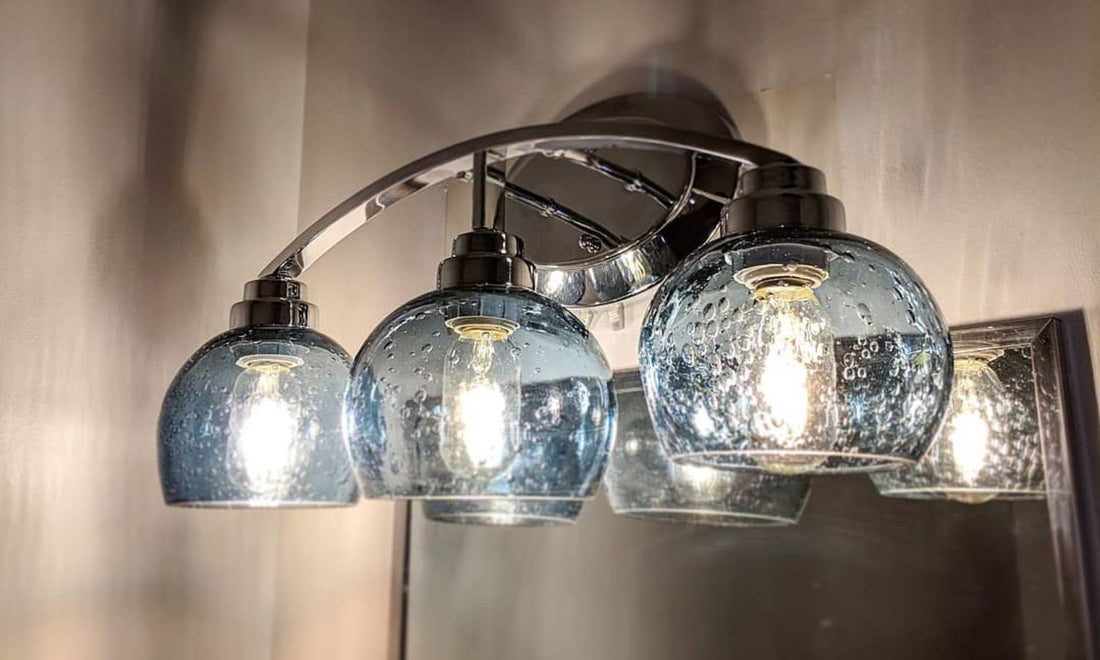
How the Right Lighting Can Make a Room Seem Bigger
Lighting is one of the most important aspects of interior design. Not only does it create a mood, but it also plays a crucial role in how we perceive the size of a room. Good lighting can make even a small space feel larger and more inviting, while bad lighting can make a large space seem cramped and unwelcoming. In this blog post, we’ll explore how the right lighting can make a room seem bigger and offer some tips on achieving that effect.
Use Multiple Light Sources
Using one overhead light source can create a lot of shadows and make a room feel smaller. To counteract this effect, use multiple light sources throughout the room. You can use floor lamps, table lamps, and wall sconces to add more light and create a sense of depth. Using several light sources will brighten up the room and create a more open and spacious feel.
Highlight Vertical Space
Another way to use lighting to make a room seem bigger is by highlighting vertical space. You can use uplighting, an effect created by strategically placing lighting fixtures on the floor and pointing them up, to draw attention to the ceiling. This will give the impression that the room is taller and more spacious than it actually is. You can also use directional lights to highlight art or architectural details on the walls, drawing the eye up and making the space seem more expansive.
Use Bright, Natural Light
Natural light is your best friend when it comes to making a space feel larger. If the room has windows, make sure to let in as much natural light as possible. Use sheer curtains or blinds that you can open to allow maximum light in. If the room lacks natural light, consider choosing vibrant artificial lighting that replicates the effects of natural light. This will enhance the room’s brightness and contribute to a more spacious ambience.
Use Shadow Play
Using shadows to create a captivating effect can make a room seem bigger. Employing directional lights such as spotlights or track lighting on different elements will generate intriguing patterns and shapes that enhance texture and depth. This visual trickery gives the impression of a larger area while adding visual appeal to the overall design.
Use Mirrors To Reflect Light
Mirrors are a great way to reflect light and create the illusion of more space in a room. Place mirrors opposite windows or light sources to bounce the light around the room. This will not only make the room seem brighter but also give the illusion of more depth. Mirrors also create the visual effect of a second window, making a small room seem much larger.
Accentuate Furniture With Light
Accent lighting is a great way to make a room feel larger and more open. Use track lighting or other directional lights to highlight key pieces of furniture or objects in the room. This will draw attention to the furniture and create a sense of depth and dimension. You can also use under-cabinet lighting to enhance the appearance of countertops or other surfaces. Make sure to use LED lights for accent lighting, as they produce less heat and are energy efficient.
Install Dimmer Switches
Adding dimmer switches to your lighting setup is an ingenious method which introduces versatility. The switches let you customize the light intensity according to your needs and mood. By dimming the lights, you can also manipulate the shadows in the room, making it appear larger and more spacious. This can be especially useful in small rooms where every inch counts. Additionally, dimmer switches help reduce energy consumption and extend the life of your light bulbs by reducing the amount of heat generated.
Layer Lighting
Layering lighting is a technique you can use to create a balanced and layered effect in the room. It involves using different types of light sources such as task lights, ambient lights, and accent lights to achieve a specific mood and atmosphere. Task lights deliver targeted illumination for any given job, like reading or cooking, whereas ambient lights emit a subtle radiance and infuse the room with a cozy vibe. Accent lights highlight specific areas and objects in the room, such as artwork or architectural features. By layering these different types of lighting, you can enhance the perceived depth of the room and add interest to the design.
Consider Light Placement
The placement of light sources can significantly impact how a room appears. For example, placing a floor lamp in the corner of a small room can make the walls appear farther apart and create a more open feel. Similarly, using wall sconces instead of overhead lighting can reduce the shadows and make the room feel more spacious. It’s important to consider the room’s layout and experiment with different light sources to find the best placement for maximum impact.
Use Light To Define Zones
If you have an open-plan living space, creating distinct areas for different activities can be challenging. You can use lighting to define different zones and create a focal point for each area. For example, pendant lights over the dining table can create a warm and welcoming atmosphere, while task lights in the kitchen can provide specific illumination for cooking and food preparation. By using lighting to define zones, you can make the space feel more organized and functional and create a sense of flow between different areas of the room.
Lighting can have a massive impact on the way people perceive a space. By using the tips above and experimenting with different light sources, you can brighten up a room and create a more open and spacious feel.
Illuminate your home with eco-friendly lighting options such as Bicycle Glass’s recycled glass sconces. We handcraft our energy-efficient sconces from recycled glass, providing a chic and eco-conscious look. Whether you are a fan of a warm glow or bright light, our sconces deliver it all without compromising on sustainability. Shop our one-of-a-kind fixtures today to find the perfect lighting solutions for your home!

